Table of Contents
Come join us now, and enjoy playing your beloved music and browse through great scores of every level and styles!
Can’t find the songbook you’re looking for? Please, email us at: sheetmusiclibrarypdf@gmail.com We’d like to help you!
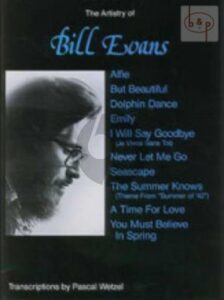
Best Sheet Music download from our Library.
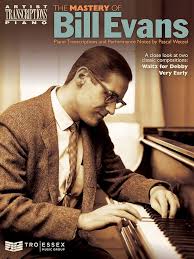
Please, subscribe to our Library.
If you are already a subscriber, please, check our NEW SCORES’ page every month for new sheet music. THANK YOU!
Remembering Bill Evans, born on this day in 1929 (1929-1980).
Bill Evans: The Poet of the Piano and Architect of Modern Jazz Harmony
Bill Evans (1929-1980) stands as one of the most influential and revered figures in the history of jazz. More than just a pianist and composer, he was a profound musical thinker who reshaped the harmonic and textural landscape of the genre. His introspective lyricism, unparalleled harmonic sophistication, and revolutionary approach to ensemble playing, particularly within the piano trio format, left an indelible mark that continues to resonate deeply with musicians and listeners alike. To delve into Bill Evans is to explore the very essence of modern jazz piano and composition.

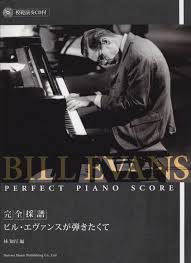
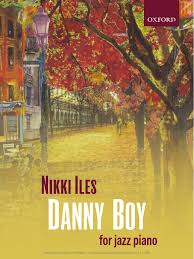
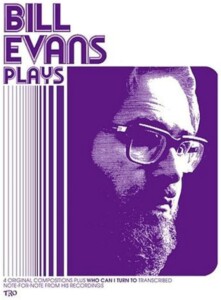

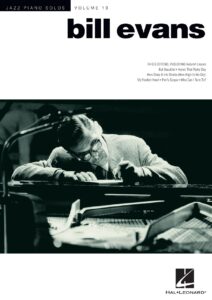



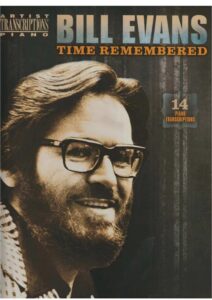
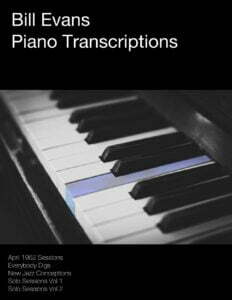
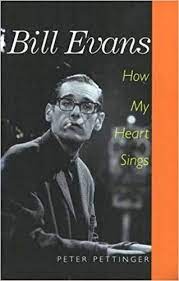
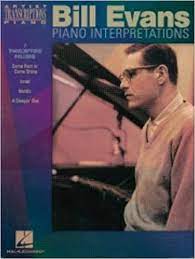
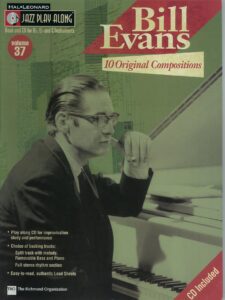
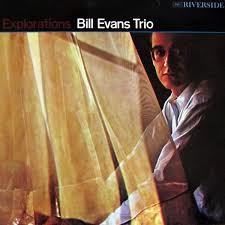


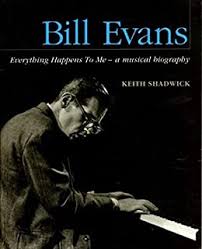
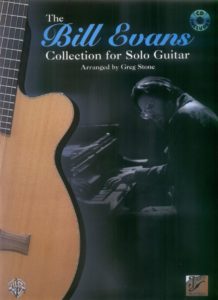
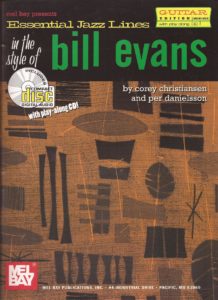
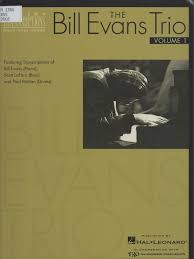
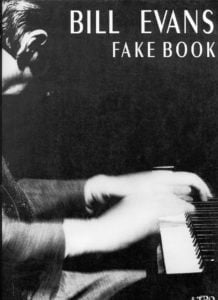
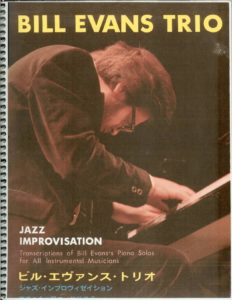
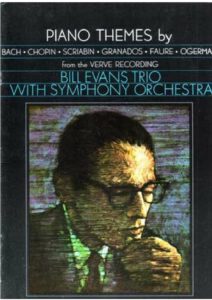

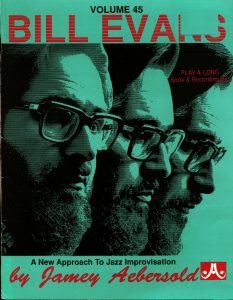

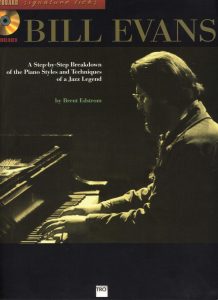
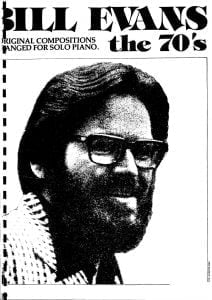
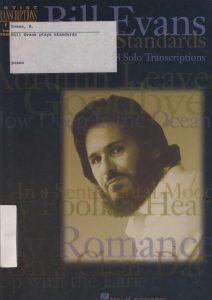




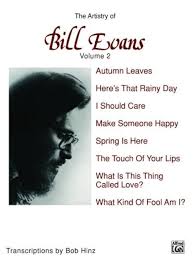
I. Biography: The Quiet Revolutionary
Browse in the Library:
Or browse in the categories menus & download the Library Catalog PDF:
- Early Life and Roots (1929-1950s): Born William John Evans on August 16, 1929, in Plainfield, New Jersey, Bill was immersed in music from a young age. He began classical piano lessons at six, later studying flute and violin. His older brother Harry, also a pianist, was an early influence. Evans displayed exceptional talent early on, winning local competitions. He attended Southeastern Louisiana University on a flute scholarship but quickly focused on piano, graduating with a degree in piano performance and music education in 1950. After a stint in the army (1951-1954), he pursued graduate studies at the Mannes School of Music in New York City, delving deep into composers like Debussy, Ravel, Scriabin, and Bach – influences that would profoundly shape his harmonic language.
- New York Apprenticeship and Breakthrough (1955-1958): Evans immersed himself in the vibrant New York jazz scene, playing with established figures like clarinetist Tony Scott (recording his first significant album, Everybody Digs Bill Evans, in 1958), guitarist Mundell Lowe, and bandleader/orchestrator George Russell. Russell’s work on modal jazz and the Lydian Chromatic Concept of Tonal Organization was particularly influential, expanding Evans’s harmonic thinking beyond traditional functional harmony. He also played briefly with Charles Mingus in 1958, further honing his skills in complex ensemble settings.
- The Miles Davis Crucible (1958-1959): Evans’s career trajectory changed dramatically when Miles Davis invited him to join his sextet in early 1958, replacing Red Garland. Though his tenure was relatively short (less than a year initially, with a brief return in 1959), its impact was seismic. Evans became an integral part of Davis’s exploration of modal jazz, contributing significantly to the landmark albums Milestones (1958) and, most famously, Kind of Blue (1959). Evans’s harmonic subtlety, introspective touch, and ability to create atmosphere were crucial to the album’s unique, spacious, and profoundly influential sound. His introductory piano chords on “So What” remain iconic. He also contributed the hauntingly beautiful composition “Blue in Green.”
- The First Trio: Revolutionizing the Format (1959-1961): Leaving Davis, Evans formed what many consider the most influential piano trio in jazz history with bassist Scott LaFaro and drummer Paul Motian. This group didn’t just play together; they conversed. LaFaro’s unprecedented melodic and contrapuntal approach to the bass, Motian’s textural and interactive drumming, and Evans’s harmonically rich piano created an egalitarian interplay where roles constantly shifted. They achieved a level of collective improvisation and telepathic communication rarely heard before. Albums like Portrait in Jazz (1959), Explorations (1961), and especially the live recordings Sunday at the Village Vanguard and Waltz for Debby (both 1961) captured this magic. Tragically, LaFaro was killed in a car accident just ten days after the Vanguard recordings, devastating Evans and abruptly ending this revolutionary phase.
- Rebuilding and Refinement (1962-1970s): Deeply affected by LaFaro’s death, Evans retreated for almost a year. He eventually returned, working initially with bassist Chuck Israels and later forming a long-lasting and highly successful trio with bassist Eddie Gómez (1966-1977) and drummers including Marty Morell, Philly Joe Jones, Jack DeJohnette, and Eliot Zigmund. While the LaFaro trio’s explosive interactivity was unique, the Gómez trios focused on a different kind of perfection: lush harmonies, intricate counterpoint, and a deep, singing lyricism. Gómez’s virtuosity and profound musical empathy made him Evans’s longest-serving bassist. This period produced a vast and consistently high-quality discography for Riverside, Verve, and later Warner Bros. and Fantasy.
- Later Years and Decline (Late 1970s-1980): The final phase of Evans’s career saw him grappling increasingly with health problems, exacerbated by a long-standing struggle with drug addiction (primarily heroin, later cocaine). Despite this, his musical commitment remained unwavering. His last trio featured bassist Marc Johnson and drummer Joe LaBarbera, capturing a renewed spark and introspective depth on albums like We Will Meet Again (1979, Grammy winner) and The Paris Concert (1979). Bill Evans passed away on September 15, 1980, from a combination of cirrhosis, bronchial pneumonia, and untreated hepatitis, complications stemming from his addiction.
II. Music Style: Impressionism Meets Bebop
Evans’s style is a unique and instantly recognizable synthesis:
- Harmonic Genius: This is his defining legacy. He moved far beyond standard bebop chord changes:
- Modal Harmony & Pedal Points: Deeply influenced by Kind of Blue and his classical studies, he often suspended traditional chord progressions, dwelling on single modes or using pedal points (sustained bass notes) over which rich harmonies could shift kaleidoscopically (e.g., “Peace Piece,” “Time Remembered”).
- Non-Tertian Harmony: Moving beyond chords built solely in thirds. He incorporated:
- Fourth-based Chords: Stacking fourths created open, ambiguous, modern sounds (e.g., the intro to “So What”).
- Cluster Chords: Tightly spaced notes creating complex, often dissonant, sonorities used for color and tension.
- Rootless Voicings: A revolutionary technique where the bass note (root) of the chord is omitted by the pianist, played instead by the bassist. This freed Evans’s left hand to play richer, more complex harmonic structures (often including the 3rd, 7th, extensions like 9ths, 11ths, 13ths, and alterations like #11ths, b9ths) higher on the keyboard, creating a luminous, floating quality. This defined the sound of his trios.
- Reharmonization: Masterfully substituting complex, unexpected chords for standard ones within a tune’s progression, constantly refreshing familiar standards.
- Impressionist Influence: The lush, ambiguous harmonies and focus on color and texture directly echoed Debussy and Ravel.
- Lyricism and Touch: Evans possessed a remarkably beautiful, singing tone. His touch was delicate, nuanced, and expressive, capable of profound introspection and tender melancholy. Even at faster tempos, a sense of lyricism pervaded his lines.
- Rhythmic Sophistication: While not a hard-swinging pianist in the tradition of Oscar Peterson or Bud Powell, Evans’s rhythm was deeply sophisticated:
- Displaced Time: Playing phrases that start or end slightly before or after the beat, creating a subtle tension and release.
- Polyrhythms: Layering different rhythmic feels simultaneously.
- Rubato & Elastic Time: Freely stretching and contracting tempo for expressive effect, particularly in ballads.
- Interaction: His trios were masters of implied pulse and collective rhythmic flow rather than explicit time-keeping.
- Contrapuntal Improvisation: Evans thought orchestrally. His improvisations often involved interweaving melodic lines in both hands, creating a rich tapestry of sound. He wasn’t just playing single-note lines over chords; he was constantly building harmonic and melodic structures simultaneously.
III. Improvisational Vocabulary: Beyond “Licks”
Evans disliked the concept of pre-learned “licks.” His improvisation stemmed from deep harmonic understanding and melodic invention in the moment. However, characteristic elements emerge:
- Motivic Development: Taking a small melodic fragment (a motif) and developing it through repetition, variation, sequence (moving it up/down in pitch), and fragmentation throughout his solo.
- Scalar Fluidity: Seamless blending of scales, particularly major, melodic minor, harmonic minor, and various modes. He used scales not just linearly but harmonically, implying chords within scalar passages.
- Chromatic Embellishment: Using notes outside the prevailing harmony for color and tension, often as passing tones or appoggiaturas, always resolving convincingly.
- Voice Leading: A core principle. Every note in his chords and lines moved smoothly and logically to the next note, creating a sense of inevitability and flow, even through complex harmonies. This stemmed directly from his classical training.
- Block Chord Style: Occasionally using thick, moving chords in both hands for dramatic effect or climactic moments, though less frequently than players like Red Garland or George Shearing.
IV. Groups: The Trio as Chamber Ensemble
The piano trio was Evans’s primary vehicle, and he revolutionized it:
- The First Great Trio (Evans/LaFaro/Motian, 1959-1961): The benchmark for interactive trio playing. LaFaro’s melodic bass liberated the piano’s left hand (enabling rootless voicings) and created true counterpoint. Motian focused on texture, color, and dialogue rather than mere timekeeping. They played as one mind. (Landmark Recordings: Sunday at the Village Vanguard, Waltz for Debby).
- The Eddie Gómez Era (1966-1977): The longest-lasting and most prolific trio. Gómez, a virtuoso with a huge sound and deep musicality, provided a powerful yet flexible foundation. Drummers Marty Morell (longest tenure) and later Eliot Zigmund offered strong, interactive support. The focus shifted slightly towards Evans’s harmonic explorations and Gómez’s formidable solo voice, still maintaining incredible interplay but perhaps less of the radical democracy of the first trio. (Landmark Recordings: Montreux II, The Bill Evans Album, Since We Met, You Must Believe in Spring).
- The Final Trio (Evans/Johnson/LaBarbera, 1978-1980): A remarkable late resurgence. Johnson’s lyrical bass and LaBarbera’s sensitive, orchestral drumming inspired Evans to some of his most profound and emotionally direct playing. (Landmark Recordings: We Will Meet Again, The Paris Concert: Edition One & Two, Turn Out the Stars: The Final Village Vanguard Recordings).
V. Collaborations: Beyond the Trio
While the trio defined him, Evans collaborated significantly:
- Miles Davis: As discussed, pivotal. Milestones, Kind of Blue. His influence permeates Davis’s sound during that era.
- George Russell: Early and crucial exposure to advanced harmonic concepts. Recorded on Jazz Workshop (1956) and Russell’s masterpiece All About Rosie.
- Cannonball Adderley: Co-led the album Know What I Mean? (1961), a superb meeting of Evans’s lyricism and Adderley’s bluesy soul.
- Jim Hall: A legendary partnership defined by mutual sensitivity and harmonic exploration. The album Undercurrent (1962) is a duet masterpiece of chamber-like intimacy.
- Tony Bennett: Evans was Bennett’s preferred accompanist for a sublime series of albums in the 1970s (The Tony Bennett/Bill Evans Album, Together Again), showcasing Evans’s unparalleled skill as an accompanist and interpreter of song.
- Stan Getz: Recorded the acclaimed but often overlooked But Beautiful (1974 live) and Stan Getz & Bill Evans (1964 studio).
- Others: Significant recordings with Lee Konitz (Live at the Half Note), Freddie Hubbard, Shelly Manne, Jeremy Steig, Toots Thielemans, and singer Monica Zetterlund.
VI. Harmony and Chord Progressions: The Evansian Language
Evans’s harmonic language is endlessly studied:
- Modal Interchange (Borrowing Chords): Freely mixing chords from parallel major and minor keys (e.g., using a chord from C minor in the key of C major) for rich color.
- Altered Dominants: Extensively using dominant 7th chords with flattened or sharpened 5ths and 9ths (e.g., G7b9#5, G7#11) for heightened tension and sophisticated resolution.
- Tritone Substitution: Replacing a dominant 7th chord with another dominant 7th chord a tritone (augmented 4th/diminished 5th) away, creating a chromatic bass line and complex voice leading (e.g., substituting Db7 for G7 before resolving to C).
- Planing: Moving a chord shape (voicing) up or down diatonically or chromatically, creating striking harmonic shifts.
- Pedal Point: Sustaining a single note (often in the bass) while harmonies change above it, creating harmonic ambiguity and tension/release.
- Evans’s Reharmonizations: His versions of standards like “Stella by Starlight,” “Someday My Prince Will Come,” “My Romance,” and “Autumn Leaves” are considered definitive due to his radical and beautiful chord substitutions.
VII. Influences: The Wellspring
Evans synthesized diverse influences:
- Jazz: Bud Powell (bebop fluency), Nat King Cole (touch, trio concept), Lennie Tristano (counterpoint, linear sophistication), Horace Silver (blues feeling), Ahmad Jamal (space, dynamics).
- Classical: Claude Debussy, Maurice Ravel, Alexander Scriabin, Igor Stravinsky, Béla Bartók, J.S. Bach (counterpoint, voice leading).
- Popular Song: The Great American Songbook (Gershwin, Kern, Rodgers, etc.) provided his core repertoire; he revered its melodic and harmonic craftsmanship.
VIII. Legacy: The Enduring Shadow
Evans’s influence is immeasurable and pervasive:
- Pianists: Virtually every significant jazz pianist since 1960 bears his influence: Herbie Hancock, Chick Corea, Keith Jarrett, Brad Mehldau, Fred Hersch, Michel Petrucciani, Lyle Mays, Alan Broadbent, Bill Charlap, and countless others. His harmonic concepts and trio approach are foundational.
- Harmony: His sophisticated harmonic language – rootless voicings, modal interchange, altered dominants, cluster chords – became standard vocabulary in jazz and influenced harmony in pop, film scoring, and beyond.
- Trio Concept: He redefined the piano trio as an interactive chamber group rather than piano plus rhythm section. This model dominates modern jazz trio playing.
- Composition: His originals (“Waltz for Debby,” “Very Early,” “Time Remembered,” “Turn Out the Stars,” “Peri’s Scope”) are modern standards, admired for their beauty and harmonic depth.
- Sensitivity and Lyricism: He proved that profound emotional depth and intellectual rigor could coexist, elevating introspection and lyricism to central positions in jazz expression.
IX. Major Works: Compositions
Evans was a masterful composer, though his output was relatively modest compared to his interpretive genius. Key originals include:
- Waltz for Debby
- Very Early
- Time Remembered
- Turn Out the Stars
- Peri’s Scope
- Re: Person I Knew (anagram for producer Orrin Keepnews)
- Funkallero
- Show-Type Tune
- The Two Lonely People
- We Will Meet Again
- B Minor Waltz (For Ellaine) (dedicated to his partner during his final years)
- Peace Piece (largely an improvisation)
- Laurie (dedicated to his niece)
- T.T.T. (Twelve Tone Tune)
X. Filmography: Capturing the Essence
Documenting Evans visually is relatively scarce but precious:
- The Universal Mind of Bill Evans (1966): An essential documentary featuring Evans discussing his musical philosophy and demonstrating concepts at the piano. Unique insight into his mind.
- Bill Evans Trio: Live in Norway, 1966 (Black & White footage with Eddie Gómez & Alex Riel)
- Bill Evans: The Oslo Concerts (1970s footage)
- Bill Evans: On a Friday Evening (1975, NYC)
- Bill Evans: The Last Waltz (1980, footage from his final performance in Switzerland)
- Tony Bennett: The Music Never Ends (2007 documentary featuring segments with Evans)
- Numerous short clips exist on YouTube from TV appearances (e.g., Jazz 625, Swinging in the 70s).
XI. Discography: A Vast Ocean of Genius
Evans recorded prolifically. Key albums representing different eras:
- Early Sideman/Leader: New Jazz Conceptions (1956), Everybody Digs Bill Evans (1958), Green Dolphin Street (with Cannonball Adderley, 1958).
- With Miles Davis: Milestones (1958), Kind of Blue (1959).
- The First Trio: Portrait in Jazz (1959), Explorations (1961), Sunday at the Village Vanguard (1961), Waltz for Debby (1961).
- Post-LaFaro: Moon Beams (1962), How My Heart Sings! (1962), Undercurrent (with Jim Hall, 1962), Conversations With Myself (1963 – Solo overdubbed piano), Trio 64 (1963).
- Eddie Gómez Era: Bill Evans at the Montreux Jazz Festival (1968), Alone (1968 – Solo), From Left to Right (1969 – with orchestra), The Bill Evans Album (1971 – Grammy Winner), The Tokyo Concert (1973), Since We Met (1974), Alone (Again) (1975), Crosscurrents (with Lee Konitz & Warne Marsh, 1977), I Will Say Goodbye (1977), You Must Believe in Spring (1977, released posthumously), New Conversations (1978 – Solo overdubbed piano).
- Final Trio: Affinity (with Toots Thielemans, 1978), We Will Meet Again (1979 – Grammy Winner), The Paris Concert: Edition One & Edition Two (1979), Turn Out the Stars: The Final Village Vanguard Recordings (June 1980), The Last Waltz (Sept 1980 – final performance).
- With Tony Bennett: The Tony Bennett/Bill Evans Album (1975), Together Again (1976).
XII. Iconic Performances and Recordings
Beyond specific albums, certain tracks are legendary:
- “So What” (Intro & Solo) – Kind of Blue (Miles Davis)
- “Blue in Green” – Kind of Blue
- “Autumn Leaves” – Portrait in Jazz
- “Solar” – Sunday at the Village Vanguard
- “Waltz for Debby” (Live) – Waltz for Debby
- “My Foolish Heart” (Live) – Waltz for Debby
- “Gloria’s Step” (Live) – Sunday at the Village Vanguard
- “Peace Piece” – Everybody Digs Bill Evans
- “My Romance” (Solo) – Alone
- “Nardis” (multiple trio versions, became a signature exploration)
- “But Beautiful” (with Stan Getz)
- “The Touch of Your Lips” (with Tony Bennett)
- “We Will Meet Again” – We Will Meet Again
- “Your Story” – The Paris Concert
- “Laurie” – The Last Waltz
Bill Evans: The Enduring Voice
Bill Evans was a quiet revolutionary. He didn’t seek the spotlight, but his music spoke with a clarity, depth, and beauty that fundamentally altered the course of jazz. He expanded the harmonic language, redefined ensemble interplay within the trio, and imbued jazz with a profound lyricism and introspective depth drawn from both classical and jazz traditions.
His battle with personal demons adds a layer of tragic poignancy to his art, but it never diminished its brilliance. His recordings remain a wellspring of inspiration, technical marvel, and emotional resonance. To listen to Bill Evans is to hear the sound of modern jazz piano crystallized – a sound that continues to challenge, comfort, and captivate generations of listeners and musicians. He remains, quite simply, the Poet of the Piano.
Bill Evans: Time Remembered (2015 Documentary)
Bill Evans discography
Bill Evans tribute albums
If you want to read more about Bill Evans’ Life:
Pettinger, Peter (2002) [1999]. Bill Evans: How My Heart Sings (New ed.). Yale University Press,
Bill Evans official website.

